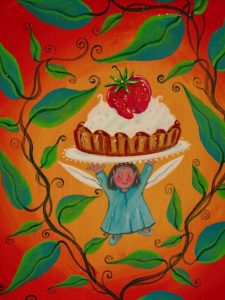
– Photo by Jan Ketchel
The heart pounds so hard it must be audible to others. The muscles seize in momentary paralysis. The face flushes, the throat tightens, the breath is halted, the body vibrates. This is divine encounter, a numinous experience.
A man looks at his partner and is overtaken by the beauty of divine glow. So powerful is this encounter with numinous energy that his humanness is overwhelmed with premature ejaculation.
A woman stands before a large gathering. She is there to perform. Looking out at the crowd she is overtaken by the vastness of presence. She straddles anxiety and dizziness. Is she ready to channel the divine through her instrument? Her first challenge will be to steady her smallness in her numinous encounter with the divine as felt through the bigness of the crowd.
An ordinary dream escalates to a nightmare. Before we are able to awaken we are seized by terror as we are cornered by overwhelming odds. Waking with a start, our sleep is finished for the night. Our numinous encounter with the divine terrible leaves us anxiously counting the minutes till daylight.
As helpful as our rational mind may be in orienting us to ordinary predictable life, reason is no match for the power of the numinous. Until the light of day, awakened by the tremendum of a nightmare, we remain in the grip of the monster.
Similarly, in waking life, no amount of reason can free the afflicted from the power of a compulsion. Compulsion is the energy of the numinous imposing itself upon the smallness of ego. Ego can be coached to refuse compulsion’s will, but it cannot escape the resultant crucifixion by anxiety, the consequence of refusing the will of the compulsion.
The smallness of our ego as it is overtaken by the all-consuming energy of a numinous encounter, bidden or unbidden, is the core challenge of this life. For a child, parents loom as the first numinous encounter with a power greater than themselves.
Freud’s vast contributions on the legacy of these early relations attest to the power of these numinous encounters to control and define a lifetime. How are we ever to discover ourselves if the image or actual person of our parents continues to rule and preoccupy life throughout adulthood?
Jung discovered that the numinous character of these encounters originates in the vastness of the collective unconscious, home of the archetypes. Archetypes are the gods of yesteryear that were formerly projected onto Mt. Olympus or some other heaven. Modern humans have conquered space; the gods are now operating internally through numinous encounters within the self, projected outward onto normal humans experienced as gods and goddesses.
The truth is that we are seekers of numinous encounters. They are the experiences of divine communion that lend ordinary life its luster and meaning. They can be found in an impulsive Tinder hookup. They can be experienced in the elevating music of a rock concert or the Philharmonic. They can be experienced in religious or civil rituals, in the union of marriage or the finality of death. They are certainly the draw of most mind-altering substances.
The energy of the numinous at the human animal level is instinct. Animals become instinctually driven to mate, human animals are no exception. The human spirit elevates an instinctual act into an ethereal one. The act of sex can combine with love in union of body and spirit. The projected archetypes of god and goddess imbue the perception of lovers with spiritual depth and awe.
The human challenge is to engage these heightened energy states with sobriety. For some, the attraction to heightened energy is like a moth drawn to a flame. This is addiction, whether it be to substance, sex, a person or the news. The major challenge in addiction is to find a non self-injurious way to numinous encounter. The dry drunk alternative merely relegates one to addiction to negativity, also a powerful numinous force.
The development of control enables the ego to be nourished and broadened in numinous encounter, but not possessed and taken over by it. We start with the reality that we are small and vulnerable, the numinous is large and powerful. No point in inflating, i.e., “I can handle that.” No, the fact remains that numinous anything is more powerful than the ego. Be humble, but be an adult. If the Queen offers an audience with her numinous energy, be the knight who humbly receives her blessing.
The instinctual fear activated by encounters with numinous energy is a natural reaction to the presence of autonomous power greater than one’s ego. Turning to the body to regulate the inner influx of energy is far more effective than turning to the mental plane for support. The mind is likely to be inundated with thoughts that intensify the fear—no help there. A deep breath is a far greater regulator of numinous encounter than rationality, which is already in an experience outside its league.
Pranayama breathing, biofeedback exercises, and the intent to commune in flowing calm are practical technologies for the ego to practice to facilitate its ability to calm and regulate the central nervous system’s ability to go with the influx of heightened numinous energy.
Ultimately, the ego has no choice but to encounter the numinous. Our world now reflects this reality. The numinous is playing outwardly with abandon in the Gotham City world we are now living in. How the collective ego of humankind handles this encounter is a work in progress.
The playing field within the individual is equally as powerful but on that playing field definite progress can be made. Every individual encounters the numinous. Through suffering the encounter and holding one’s own we are nourished and guided to further our individuation and advance the world.
Dreaming it forward,
Chuck

